Why Designer Jessica Hische Wrote a Children’s Book on Being Brave
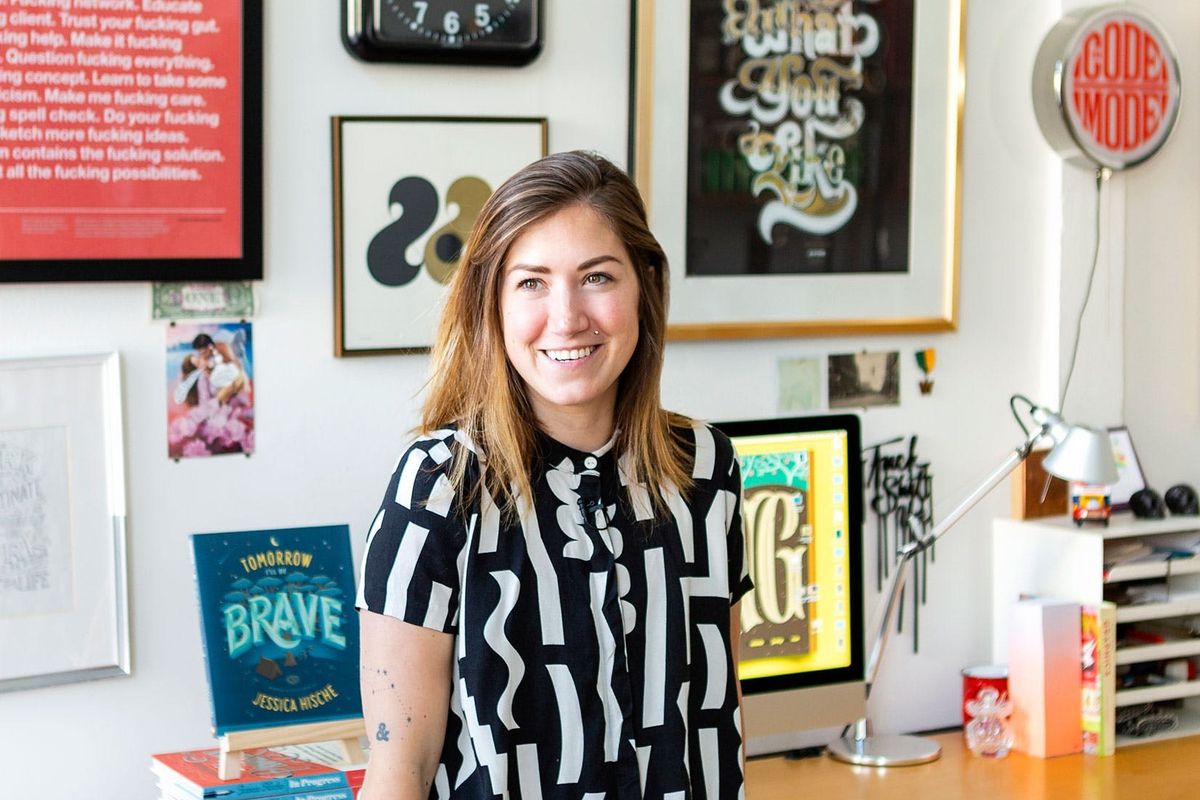
Why Designer Jessica Hische Wrote a Children’s Book on Being Brave
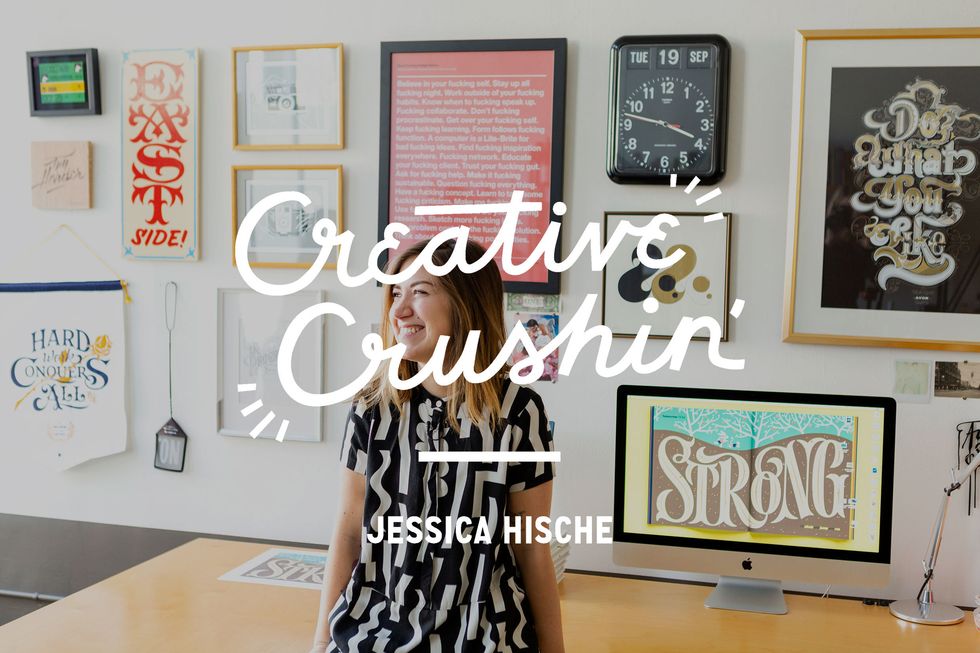
If you don't know her by name, you definitely know designer, artist, and now-author Jessica Hische by letter ;) Known for her beautiful custom lettering, serious graphic design chops, and refreshingly transparent nature, Hische's latest endeavor has launched her into the world of authorship, first with her children's book Tomorrow I'll Be Braveand, coming soon,Tomorrow I'll Be Kind.
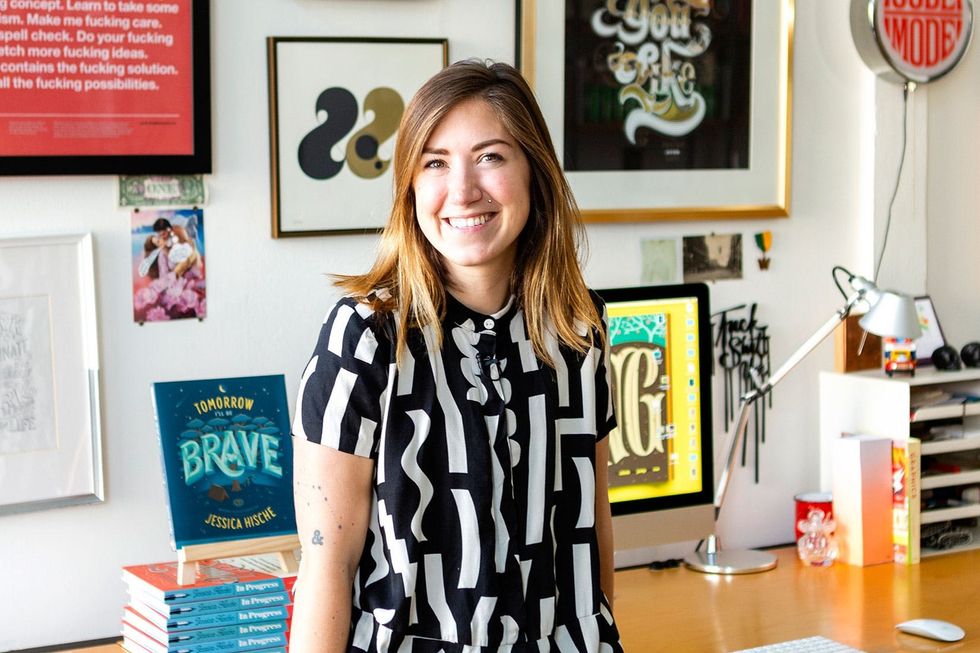
Anjelika Temple here, Founding Partner and Chief Creative Officer of Brit + Co, and mom to daughter Anokhi, who’s a big fan of “the bunny book” — her endearing name for Hische’s Brave. I had the privilege of spending a couple hours with Jessica in her studio in the midst of her book tour, and am thrilled to be able to share a snippet of her ongoing creative journey with you in this edition of Creative Crushin’.
The idea of turning to process when you’re about to embark on a blank page is something that resonates with all of us — whether you’re embarking on a creative project, new side hustle, or a big presentation at work. Read on for sage advice and relatable wisdom from this incredibly talented artist, in her own words.

Brit + Co: Did you always know you wanted to be a professional artist? Tell me more about your creative journey.
Jessica Hische: So ever since I was a little kid, I always knew I wanted to be an artist of some kind. I think part of it was just because everyone always told me how great I was at art and I think kids generally try to do the things that they're told they're good at. Before all that started happening, before I was getting validation from teachers and coloring contests, I just really would draw all day long. When you think about what kids are interested in, there are some kids that are just super voracious readers and they just burn through books. I was the kid that burned through art supplies. I would sit in a corner and draw for eight hours a day and I became the best child because of that. I think everyone dreams for the kid that has a passion so early on. But I didn't know what that was gonna translate into until I got to college. I went to art school knowing that art was the only thing I was really into and it wasn't until I got to going to Tyler School of Art in Philadelphia that I really understood how I was gonna make art for the rest of my life.
I found that when I was 18, I felt like I had nothing to say to the world. I felt like there were so many people out there that had these personalities and opinions and they wanted to make work about the world or express themselves and that just wasn't me yet. And so graphic design was really this pathway for me to be able to make the work that I wanted to make. I wanted to just to be able to draw all day and make stuff all day and have an excuse to do so. And graphic design and illustration, because you're working with briefs, because you're getting a problem to solve, it just made it easy. It made it frictionless for me to make work. I didn't have to sit there and rack my brain about what do I care about this week that I feel like being expressionistic about? It was just about how do I solve this problem directly.
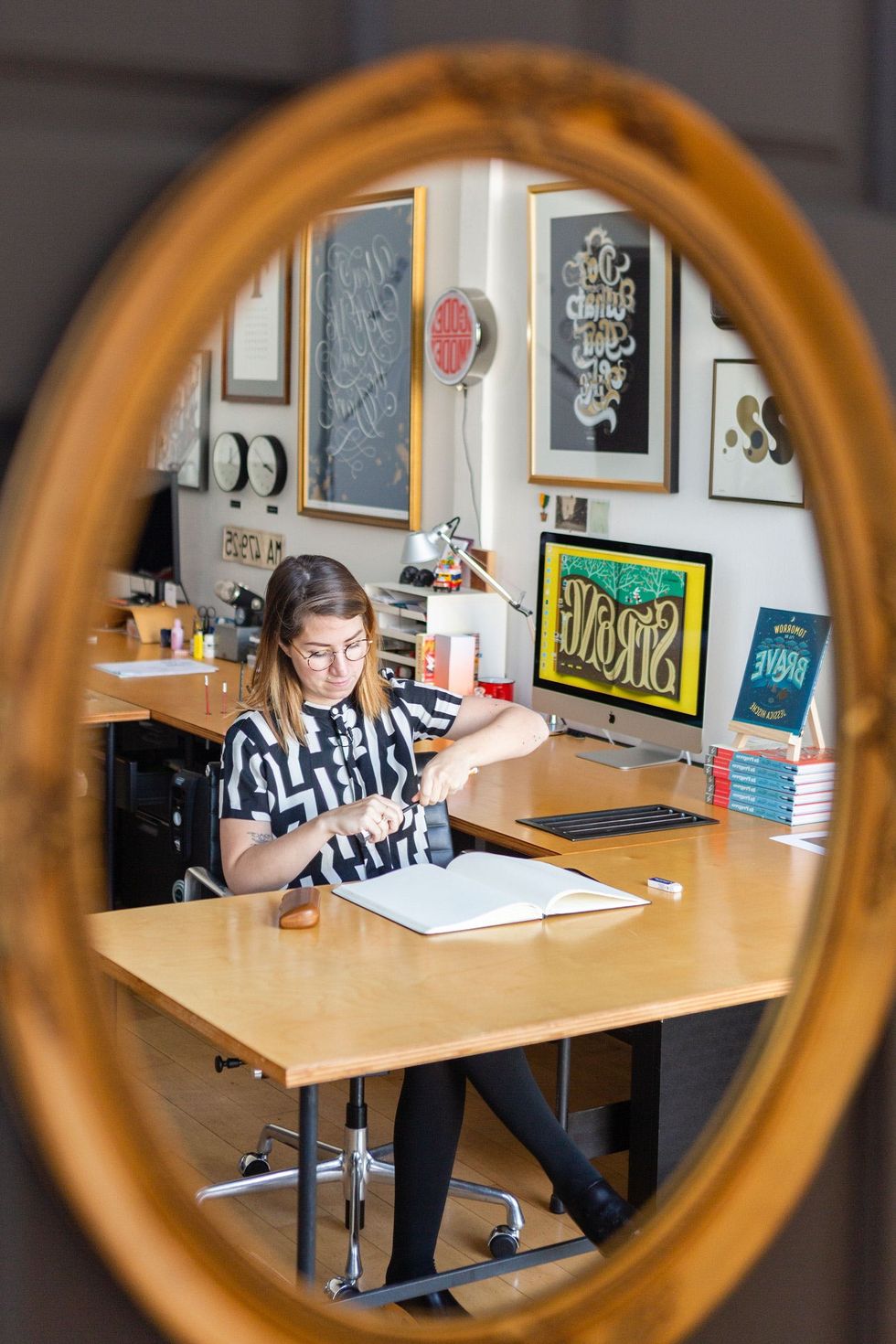
B+C: It seems like you work on an incredible number of different projects at once. Where do you go for inspiration?
JH: For me, inspiration usually comes from whatever I'm experiencing in my life at that moment. I don't like to do projects that are research assignments. I don't like to go to look on the internet to decide what I feel like making work about. It's usually when I'm out and about in the world and I see something or I'm experiencing something and then I wanna make work in reaction to that thing.
I grew up without the internet for a while, but most of my adult life, teenage life involved being on the internet. So I had access to so many things. And of course, everybody has made everything ever. But just because something exists in some other place or way or world, doesn't mean that you can’t bring something similar to an audience in an original and new way.
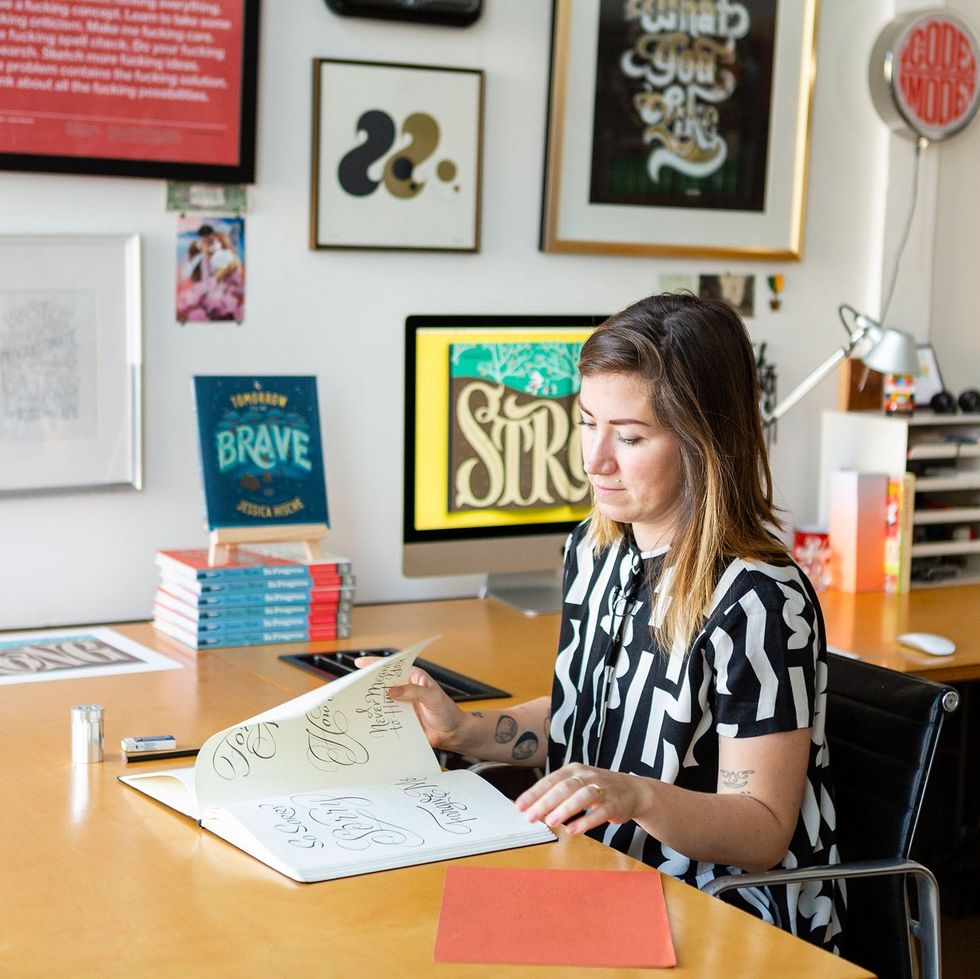
B+C: So talk to me a little bit more about your journey with become an artist, and not “just” a designer.
JH: I think the line between design and illustration and art and craft is like can be very blurry. And it's very personal, you know? I think whatever you wanna call yourself is what you wanna call yourself and that represents the work that you feel like doing, how you perceive yourself, how you want people in the world to perceive you. For so long the word artist to me had a lot of baggage to it. It meant that I was a person that wasn't amenable to outside influence or very tight briefs or basically being the hands for someone else's ideas. To me, an artist is not that role necessarily. An artist is not someone that gets this brief that says, "Hey, draw us a tree with these three colors and then send us the file." That is more a crafts-person or more an illustrator. And an artist is someone who brings a lot to the table.
Over time, I've always felt like I've brought things to the table and I've been able to impact the art even if it had a really tight brief. But more and more now with my work, I feel like I feel a need to really bring more of myself to it and therefore, I feel more comfortable labeling myself an artist where I didn't in the past. But I think it's a really personal choice. I think it all depends on how you perceive yourself and how you want other people to perceive you.
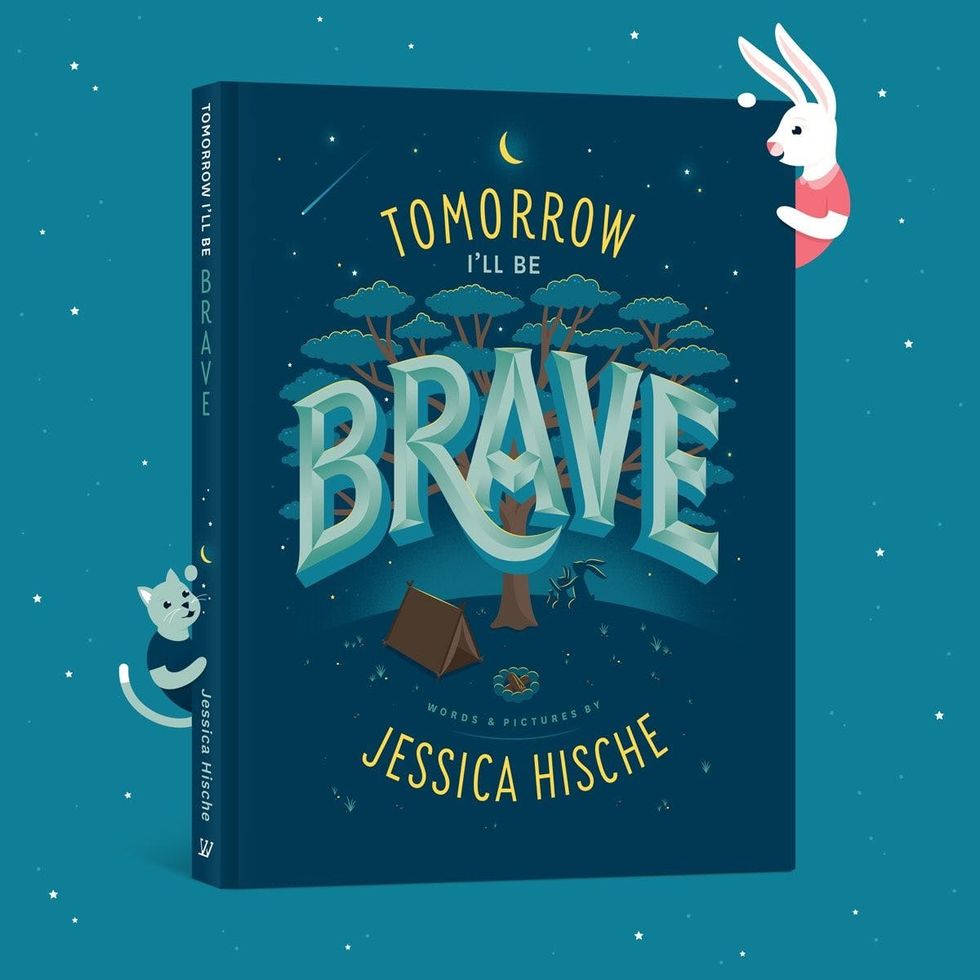
B+C: Now, onto your book! Talk to me about the inception of Tomorrow I'll Be Brave.
JH: When I was little, and even when I was in art school, people would ask me because they knew that I loved to draw and they knew that I loved illustration specifically, you know, like, "Oh, do you think you're gonna make a kid's book?" And to me, the answer was always like maybe. I don't know. I wasn't compelled. It was not a thing that compelled me early in my career cause I don't like to make work that I don't understand. The idea of making a book for children, and I hadn't been a child for 22 years or whatever, when I was 22, was really scary to me. I felt like I needed to understand the space more. After I had my daughter, it felt like I was totally thrown into this world of children's books. We were reading like 10 books to her every night. Even when she was seven or eight months old. I felt like I understood the space better and I understood what kind of work I could make that would be different than what I saw out there.
The biggest thing that I understood is that there is a bottomless pit of need for children's books. Any parent will tell you that if they have four or 500 books at their house, they're bored with every single one of them and just want new books. Even if it's on the same subjects of things that they've seen already. They just want something with a new voice, new images, something’s that gonna make their kids excited and not bored again.
Part of what inspired the book is my own journey with these themes. I've been in therapy for a few years and seeing all these skills that I'm learning now, which are so basic and not super adult-y, made me realize that if you could take on those skills early in life, they could totally change the way that you interact with the world and the way you perceive yourself. One of the things that I really wanted to do is to take these lessons that I've learned over my life and translate them for the youngest audience.

B+C: I love that concept, because I can tell you firsthand that your book resonates with me as well as my daughter. Tell me more about who you hope to inspire.
JH: The person who doesn't wanna try new things ‘cause they feel like they need to be the best at them. Or the person that is just afraid of trying something new and pushing themselves too far because they don't want people to judge them when really they're the ones that are judging themselves the harshest. While this book is meant to be aspirational, it's meant to be encouraging and has this very light effervescent energy. The main theme of it is actually introducing this idea of self-forgiveness and what happens when you don't achieve the things that you set out to do. And that trying is actually the best thing that you can do. That achieving is great but trying is actually the biggest reward.
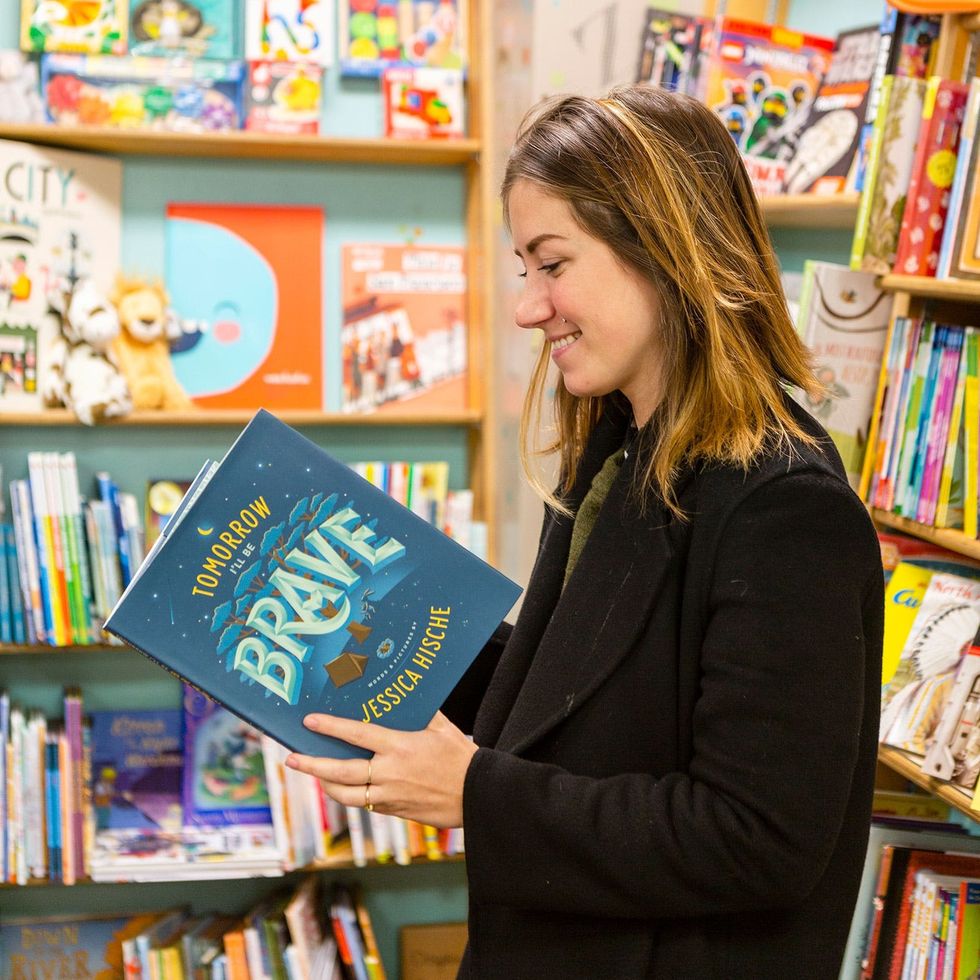
JH: Well, it's interesting because as I was writing it, I was writing it for my daughter because I started when she was about nine months old. I was pregnant with my son when I sold the book through to Penguin. The earliest part of the process, the part had the biggest impact, all had to do with her. But I might have ended up involving her a little bit too much in my beta testing phase. By the time the book actually came out it was like old hat and she was over it... When I first started writing it, I was writing a book that I was reading to a baby. After design updates and edits, it ended up being that I was making a book for a preschooler. The age range grew so much just because I was working on it alongside of my daughter growing.
And now my son is 18 months old and he loves the book! I'm grateful that I have at least one person in the house that requests to read it pretty often ;)
Even though it's not my daughter's favorite book, she's really proud of it. I went into her preschool with one of my first copies of the book to show the teachers and as soon as we got into the school she tore it out of my hands and ran it over to her favorite teacher and said, "This is mama's book." And was just so proud. So she talks a big game about it not being her favorite book but she clearly is very proud that it's out there in the world.
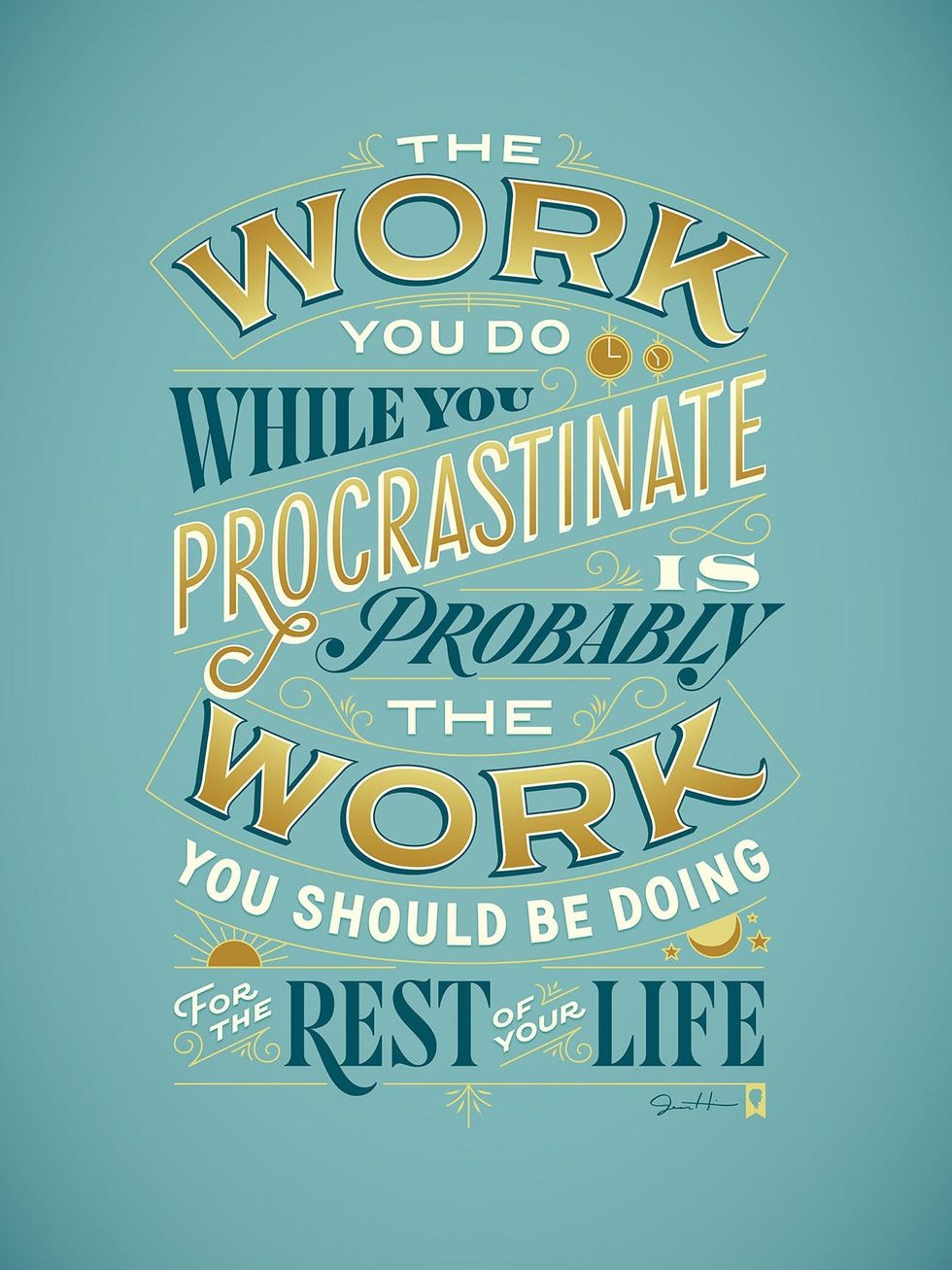
B+C: Going back to advice and inspiration and that piece of your creative journey, what advice would you share with like someone trying to figure out who they are as a designer or artist trying to find their voice?
JH: Alright. I think the biggest advice that I can give anybody is to try as hard as you can to look from within for inspiration rather than to look at your peers and people that are a few years ahead of you. Because if you're looking on Instagram at people that are doing work that are five years ahead of you, even a year ahead of you, no matter what you do you're always gonna feel like you're ten steps behind. I'm really guilty of this too. If I look at other lettering artists work, I feel like I end up falling into this trap where I need to keep up with other people. The times in my life where I've made the work that I've been the most proud of, the times that I have feel like I've been ahead of the curve instead of always behind, are the times where I just tried to shut out the world and tried to make things that I actually cared about rather than in reaction to what other people were making.
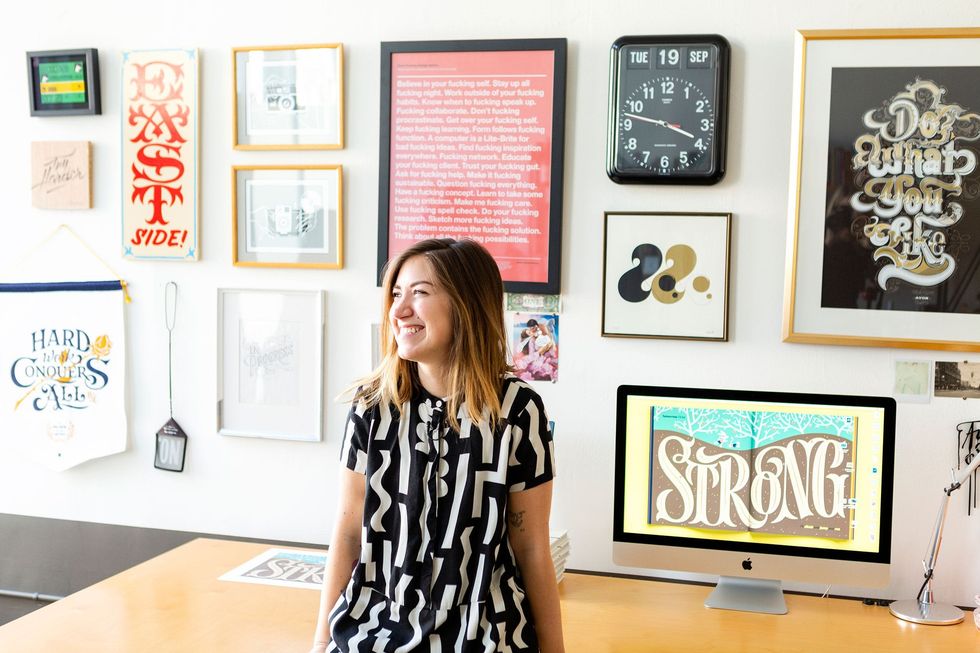
B+C: What was a big hurdle in your career that you kind of had to get over in order to get to where you are now?
JH: I think the times that I struggle the most with my work are the times that I forget that everything is just a process and that I have to walk through really specific steps to get to the end. I am a person that really believes that you can create a logical process for yourself and walk through it every single time and it completely kills the blank page syndrome that all artists get. The times where I've struggled the most on my work is when I look at a blank page and I think there's gotta be a final piece of art on here somehow. And I forget that it all is just these small decisions that add up to a whole. So once I really started understanding that and once I forced myself to actually walk through that every time, to never try to skip a step, to never fast track, I make work that I'm really proud of. And I also make decisions that I feel like I don't regret. I think it's really important for every artist and every person, whatever kind of work that they do, to have a methodology to their work because that methodology means that you don't need outside people to tell you when it's good. You can answer that question as you go along your own steps.
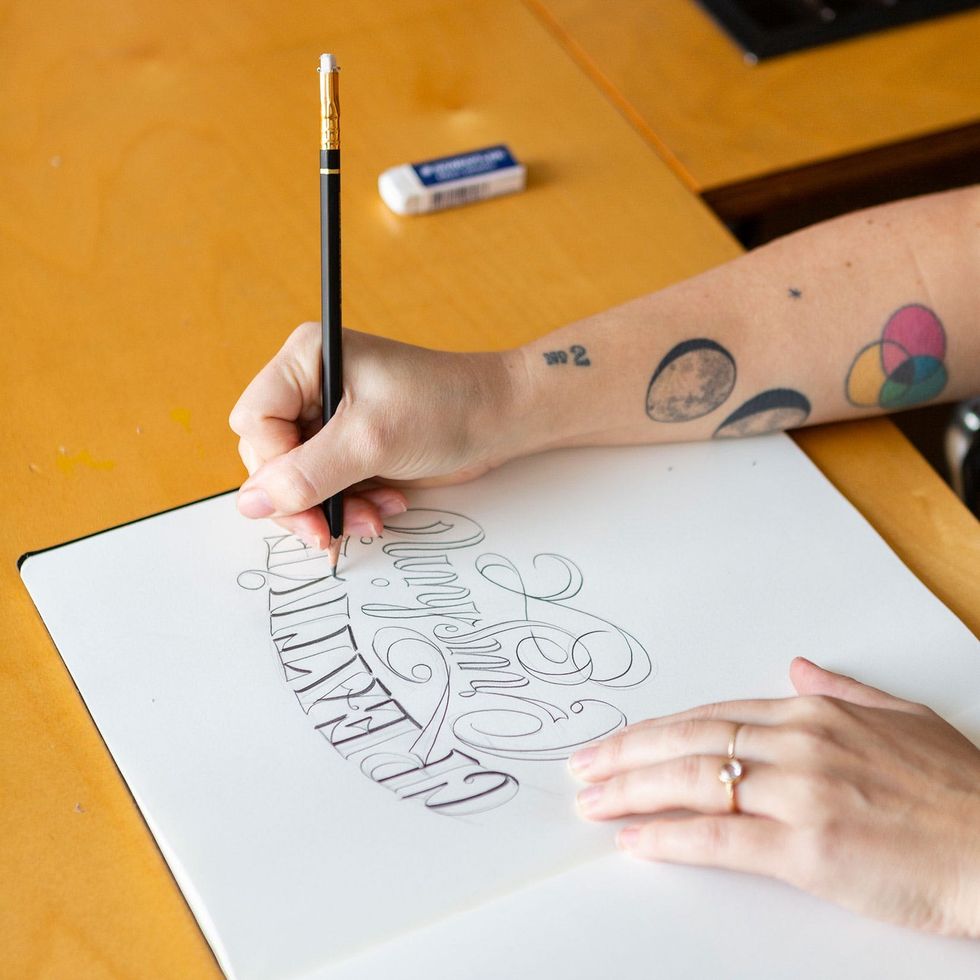
And guess what else this world-famous designer made time for while we were in her studio? Her very own hand-lettered rendition of a Creative Crushin’ logo. What?! For the WIN.
Stay tuned for more inspiring stories in our Creative Crushin’ series — and keep on hustling!
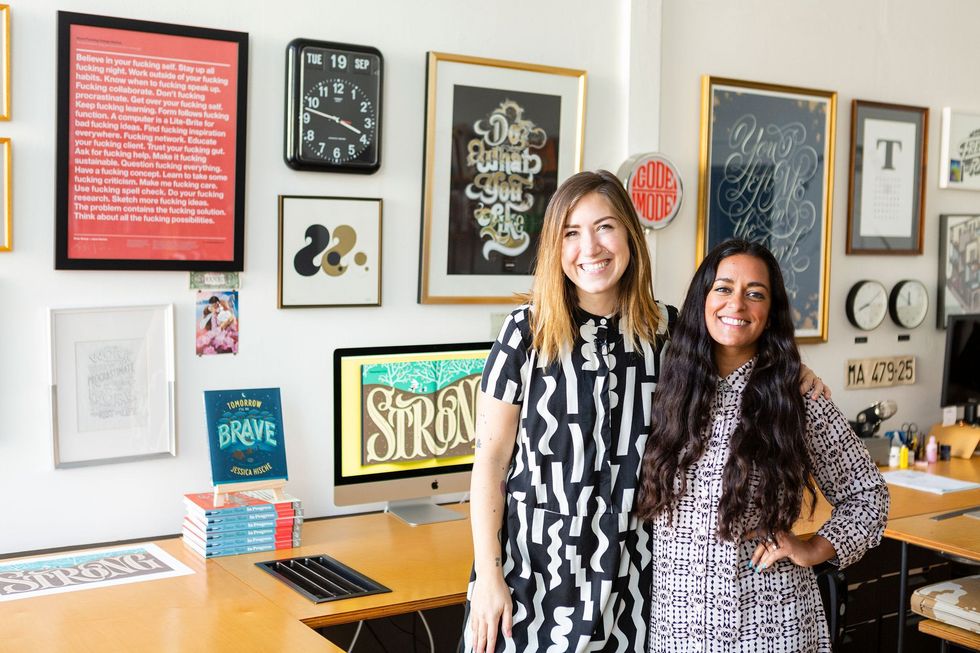
Author: Anjelika Temple (Video: Michael Sullivan; Photography: Brittany Griffin + courtesy of JessicaHische.is; Quote design: Sarah Tate)
- Why Phenomenal Entrepreneur Meena Harris Wrote a Children’s Book About Giving A Damn - Brit + Co ›
- Meet Prolific Poet and Cystic Fibrosis Warrior Lauren Molasky Fierst - Brit + Co ›
- Why Ruthie Lindsey Believes We Are ALL Capable of Healing + Finding Our Purpose - Brit + Co ›
- Lisa Congdon On Creativity, Activism, and Finding Your Flow - Brit + Co ›
- Lisa Congdon On Creativity, Activism, and Finding Your Flow - Brit + Co ›
- 7 Hand Lettered Designs for Serious Motivation - Brit + Co ›
- Lisa Congdon On Creativity, Activism, and Finding Your Flow - Brit + Co ›
- How To Write A Book - Brit + Co ›
- Tomorrow, And Tomorrow, And Tomorrow Movie - Brit + Co ›
- Gilmore Girls Star You Miss The Most Is In The Penguin - Brit + Co ›



















